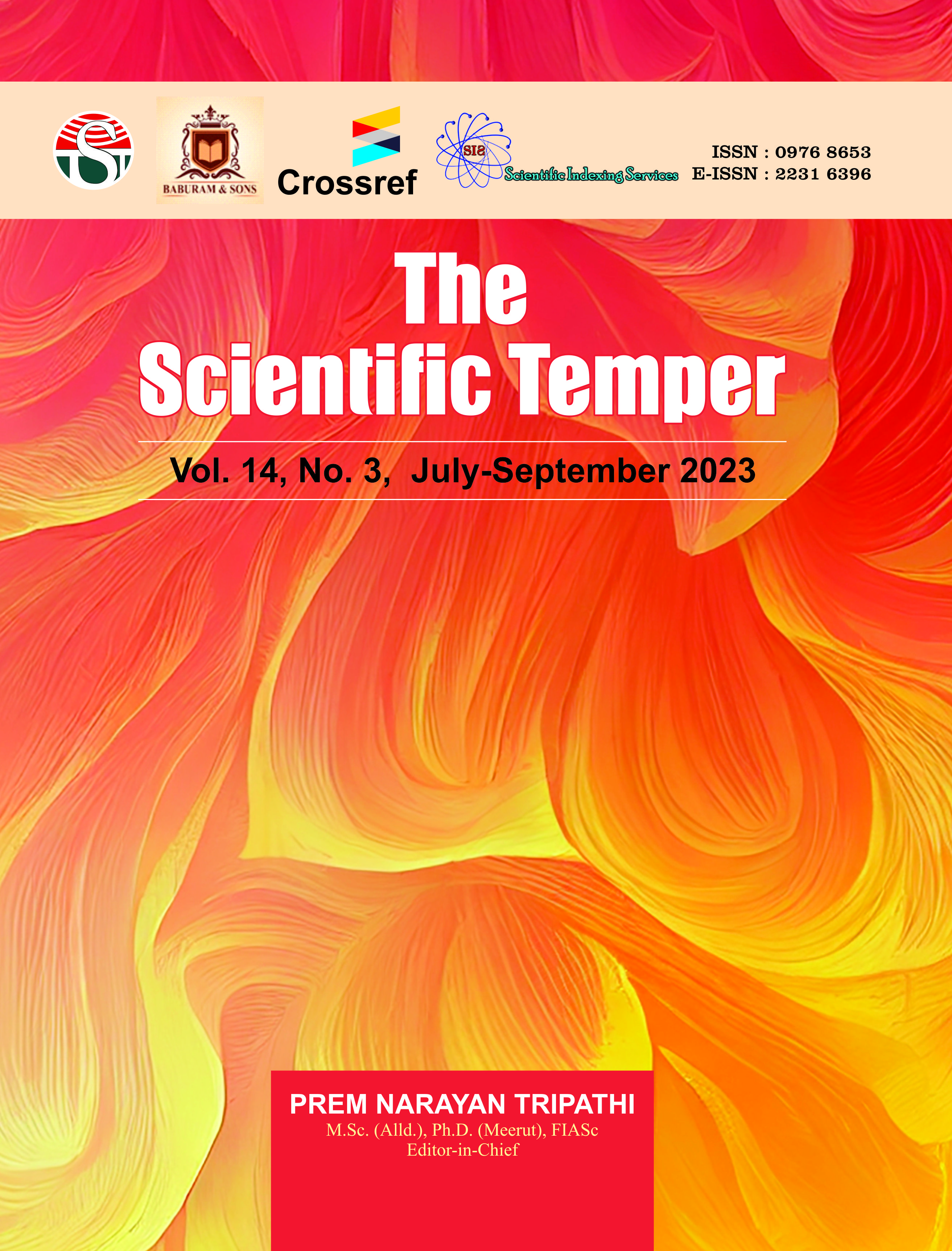Pigeonpea (Cajanus cajan L.) growth and yield with varying spacing and fertilizer
Downloads
Published
DOI:
https://doi.org/10.58414/SCIENTIFICTEMPER.2023.14.3.28Keywords:
Pigeon pea, Fertilizer, Row spacing, Yield, Fertilizer applicationDimensions Badge
Issue
Section
License
Copyright (c) 2023 The Scientific Temper

This work is licensed under a Creative Commons Attribution-NonCommercial-ShareAlike 4.0 International License.
A field experiment was conducted during kharif season of 2020 at the research farm of Amar Singh College Lakhaoti. Treatment consistedAbstract
of 3 Row spacing (30, 60 and 90 cm) and 3 levels of DAP application (control, 100 and 200 kg/ha). Results showed that treatment of
30 cm row spacing produced at par plant height compared to 60 cm row spacing. Treatment of 100 kg DAP per hectare produced
significantly plant height as compared to 200 kg DAP per hectare. The same trend was observed for a number of branches, leaves
and dry matter accumulation. Treatment of 60 cm row spacing was found to be significantly superior over 30 cm raw spacing for yield
and yield attributes treatment of 30 cm raw spacing recorded significantly higher protein content as compared to 60 cm raw spacing,
whereas treatment of 100 kg DAP per hectare was found significantly superior over control and 200 kg DAP per hectare for various
growth parameters, yield attributes and yield.
How to Cite
Downloads
Similar Articles
- Balaji V, Purnendu Bikash Acharjee, Muniyandy Elangovan, Gauri Kalnoor, Ravi Rastogi, Vishnu Patidar, Developing a semantic framework for categorizing IoT agriculture sensor data: A machine learning and web semantics approach , The Scientific Temper: Vol. 14 No. 04 (2023): The Scientific Temper
- Purnendu B. Acharjee, Bhupaesh Ghai, Muniyandy Elangovan, S. Bhuvaneshwari, Ravi Rastogi, P. Rajkumar, Exploring AI-driven approaches to drug discovery and development , The Scientific Temper: Vol. 14 No. 04 (2023): The Scientific Temper
- R. P. Singh, R. Chandra, Bikramaditya ., Efficacy of Phosphorus and PSB Response in Different Varieties of Summer Moongbean and Its Residual Effect on Fodder Sorghum in Western Uttar Pradesh , The Scientific Temper: Vol. 11 No. 1&2 (2020): The Scientific Temper
- Raghavan Santhanam, P Venugopal, Sreoshi Dasgupta, R. S. Kumar, Saravanan M.P, Ravindra A. Kayande, Analysis of organizational culture and e-commerce adoption in the context of top management perspectives , The Scientific Temper: Vol. 14 No. 04 (2023): The Scientific Temper
- Kumari Neha, Amrita ., Quantum programming: Working with IBM’S qiskit tool , The Scientific Temper: Vol. 14 No. 01 (2023): The Scientific Temper
- Shaik Rubeena Yasmin, Yashodhara Verma, Reena Lawrence, Biowaste-derived Nanoparticles and Their Preparation: A Review , The Scientific Temper: Vol. 12 No. 1&2 (2021): The Scientific Temper
- Ashutosh Kumar, The Effect of Noise Exposure on Cognitive Performance and Brain Activity Patterns , The Scientific Temper: Vol. 12 No. 1&2 (2021): The Scientific Temper
- Bhuvaneshwarri Ilango, A machine translation model for abstractive text summarization based on natural language processing , The Scientific Temper: Vol. 14 No. 03 (2023): The Scientific Temper
- Krishna Deo Verma, EFFICACY OF SOME NOVEL PESTICIDES AGAINST MUSTARD APHID , The Scientific Temper: Vol. 8 No. 1&2 (2017): The Scientific Temper
- G. Deena, K. Raja, M. Azhagiri, W.A. Breen, S. Prema, Application of support vector classifier for mango leaf disease classification , The Scientific Temper: Vol. 14 No. 04 (2023): The Scientific Temper
You may also start an advanced similarity search for this article.



